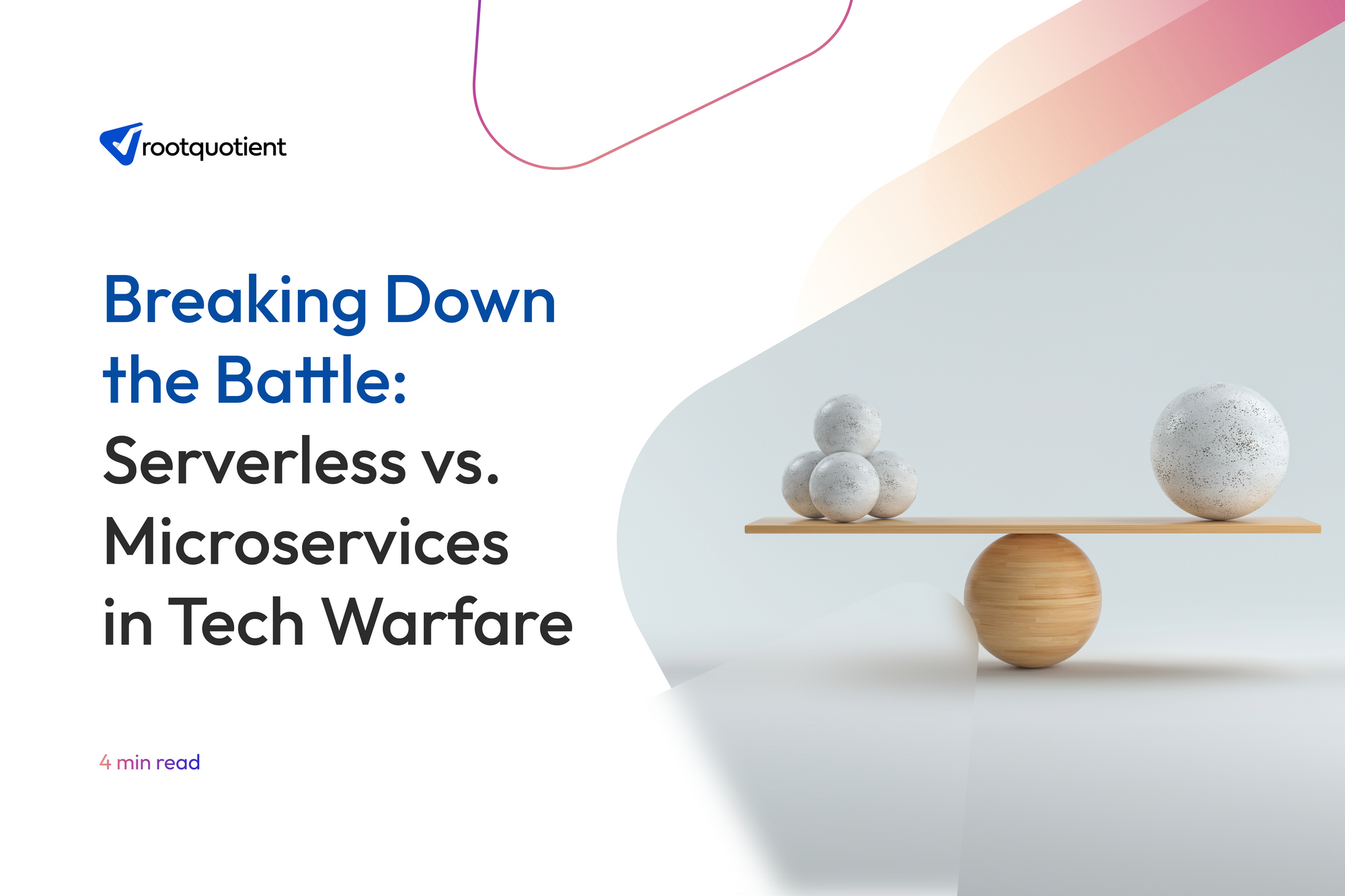Did you know that digital behemoths like Amazon, Google, and Microsoft attribute a significant amount of their operational efficiency gains to adopting microservices and serverless paradigms?
In the landscape of software architecture, two prominent paradigms have emerged as frontrunners, transforming how we conceive and build applications. Enter the realm of Microservices and Serverless Architecture, where agility meets scalability, and innovation knows no bounds.
Microservices are a software architectural approach where applications are developed as a collection of small, independent services, each running in its process and communicating via APIs, while serverless is cloud code execution without worrying about servers or constant resource provision, with costs tied to actual usage.
As we embark on this journey through the intricacies of these cutting-edge concepts, prepare to unravel the tapestry of modern software development.
What is Microservice?
Microservices break down monolithic applications into small, independent services that communicate seamlessly. Each microservice operates autonomously, fostering agility, scalability, and ease of maintenance.
For instance, Twitter transitioned to a microservices architecture to improve the scalability and agility of its platform. Different microservices handle functionalities such as user timelines, tweet processing, and notification services.
This modular approach allows for flexibility in technology choices and promotes continuous delivery. Netflix decomposes its monolithic architecture into microservices like user management, recommendation engine, and content delivery. Each microservice handles specific functionalities, allowing rapid updates and optimizations without affecting the entire system.
How Microservice Works
Microservices operate as independent entities, communicating through APIs. Each microservice executes a defined business function and has the capability for autonomous development, deployment, and independent scalability. This modularity allows for parallel development, enabling teams to work on different services simultaneously, fostering faster time-to-market.
Uber employs microservices to power its ride-hailing platform. Different microservices handle various aspects of the business, including user authentication, trip management, payment processing, and driver matching.
The autonomy of microservices is a pivotal aspect of their operation. Each service operates independently, both in terms of development and deployment. This autonomy empowers development teams to focus on specific business functionalities, resulting in services tailored for particular tasks or features.
Consequently, teams can iterate and innovate within their service boundaries without affecting the entire application. Amazon’s e-commerce platform relies on microservices to manage the intricate order fulfillment process. The order processing microservice at Amazon handles tasks like inventory management, order confirmation, and payment processing.
What is Serverless Architecture
Serverless Architecture, contrary to its name, does not mean there are no servers involved. Instead, it implies that developers need not worry about server provisioning, scaling, or maintenance. Functions are executed in stateless containers, automatically managed by the cloud provider. This pay-as-you-go model ensures cost-effectiveness.
Coca-Cola Amatil, one of the largest bottlers and distributors of Coca-Cola products, has incorporated serverless architecture into its systems. They utilize serverless offerings from AWS for certain backend processes.
Contrary to conventional setups where developers grapple with server provisioning, scaling complexities, and ongoing maintenance, Serverless Architecture liberates them from these operational burdens. In this model, functions, or units of code, become the primary focus.
These functions are executed in stateless containers, which are ephemeral and short-lived, initiated only when a specific event triggers their execution. Slack uses serverless computing to enhance its messaging platform. AWS Lambda is part of their architecture, helping them handle tasks like image processing and other asynchronous events.
How Serverless Works
Serverless computing functions on an on-demand basis, allocating resources only when specific tasks are executed. This efficient model ensures you only pay for what you use, making it cost-effective and ideal for variable workloads.
Airbnb, for instance, uses serverless architecture for parts of its platform. They have used AWS Lambda and other serverless components to improve the scalability and efficiency of certain functions.
Serverless operates on the principle of event-driven computing. Specific events, such as HTTP requests, database changes, or file uploads, trigger functions. The cloud provider dynamically allocates resources, ensuring efficient use and cost optimization. This on-demand execution minimizes idle time and resource wastage.
HubSpot, a customer relationship management (CRM) platform, has implemented serverless architecture for various features. They use serverless computing to enhance scalability and reduce operational complexity.
The Key Difference Between Microservices and serverless
Navigating the Serverless vs. Microservices landscape involves weighing the trade-offs between abstraction and control, operational simplicity, and granular execution. The choice depends on project requirements, development philosophy, and the desired balance between flexibility and ease of management.
Infrastructure Management:
- Microservices: Developers are responsible for managing infrastructure, including scaling and deployment.
- Serverless: Infrastructure management is abstracted away, with the cloud provider handling scaling and execution environment.
Scaling Model:
- Microservices: Scaling is typically manual or requires additional tools for automation.
- Serverless: Auto-scaling is inherent, triggered by events, ensuring efficient resource utilization.
Granularity of Execution:
- Microservices: Each microservice runs continuously, handling a specific business function.
- Serverless: Functions execute in response to events and remain dormant when not in use, leading to more efficient resource utilization.
Operational Overhead:
- Microservices: Teams manage the infrastructure, leading to increased operational overhead.
- Serverless: Reduced operational overhead as the cloud provider manages infrastructure.
Cost Model:
- Microservices: Cost is incurred based on the provisioned infrastructure, regardless of actual usage.
- Serverless: Costs are incurred per execution, aligning more closely with actual usage, which can be more cost-effective.
In the dynamic landscape of software architecture, the choice between Microservices and Serverless is not a binary decision but rather a strategic one based on specific project requirements. Microservices empower developers with control and flexibility, while Serverless liberates them from the burdens of infrastructure management.
Whether you opt for the granularity of Microservices or the abstraction of Serverless, both paths lead to a future where innovation and scalability coexist harmoniously, shaping the next generation of applications. Embrace the paradigm that aligns with your vision, and let the code revolution unfold.



